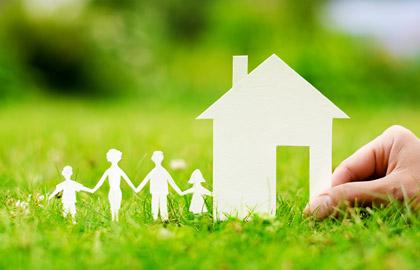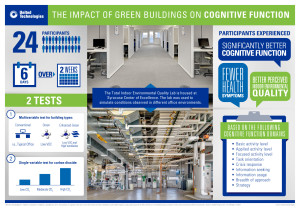The indoor built environment plays a critical role in our overall well-being. We spend about 90 percent of our time indoors, and buildings have a unique ability to positively or negatively influence our health. This study was designed to simulate indoor environmental quality conditions in green and conventional buildings and evaluate the impacts on an objective measure of human performance—cognitive function.
Collaborators
With a gift from United Technologies, the Harvard T.H. Chan School of Public Health’s Center for Health and the Global Environment worked with leading academic research institutions:
- Harvard T.H. Chan School of Public Health
- Joseph G. Allen, DSc, MPH, Principal Investigator, Assistant Professor of Exposure Assessment Science
- John D. Spengler, Ph.D., Co-Principal Investigator, Akira Yamaguchi Professor of Environmental Health and Human Habitation
- Piers MacNaughton, MS Project Manager, Doctoral Candidate
- Syracuse University Center of Excellence—The Total Indoor Environmental Quality Laboratory (TIEQ)
- Suresh Santanam, ScD, PE, Co-Investigator, Director, Industrial Assessment Center, Associate Professor, Biomedical and Chemical Engineering
- SUNY Upstate Medical School
- Usha Satish, PhD, Director, Strategic Management Simulations Institute for Human Performance
Study Design
Twenty-four participants spent six full work days in an environmentally-controlled office space at the TIEQ lab at the Syracuse Center of Excellence. They were exposed to conditions representative of conventional and green office buildings in the U.S., as well as green buildings with enhanced ventilation:
- Conventional: typical (~500 ppm) volatile organic compound (VOC) levels and 20 cfm outdoor air per person
- Green: VOC levels reduced to approximately 50 ppm and 20 cfm outdoor air per person
- Green with enhanced ventilation: VOC levels reduced to approximately 50 ppm and 40 cfm outdoor air per person
Researchers also artificially elevated CO2 levels independent of ventilation. Participants were blinded to indoor environmental quality status each day.
At the end of each day, participants were administered a cognitive test using the Strategic Management Software Executive Decision tool, which tests live decision making performance by simulating real-world scenarios. It has been used by more than 70,000 participants worldwide over the last six decades.
This validated method enabled us to understand any changes in cognitive function that might be attributable to building design features.
Results
Cognitive function scores were better in green building conditions compared to the Conventional building conditions across nine functional domains, including crisis response, strategy, and focused activity level.
On average, cognitive scores were:
- 61 percent higher in green building conditions
- 101 percent higher in enhanced green building conditions
CO2, VOCs, and ventilation rate all had significant, independent impacts on cognitive function.
Because this study was designed to reflect indoor environments encountered by large numbers of people every day, these findings have far ranging implications for worker productivity, student learning, and safety.
Green building design that optimizes employee productivity and energy usage will require adopting energy efficient systems and informed operating practices to maximize the benefit to human health while minimizing energy consumption.
See more at: http://www.chgeharvard.org/resource/impact-green-buildings-cognitive-function#sthash.gO30ug4J.dpuf


